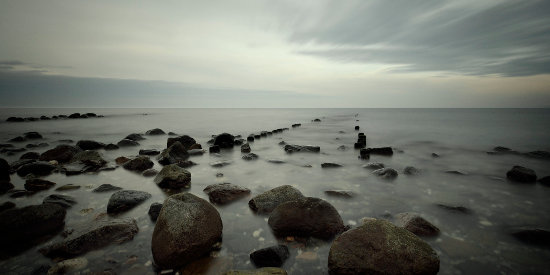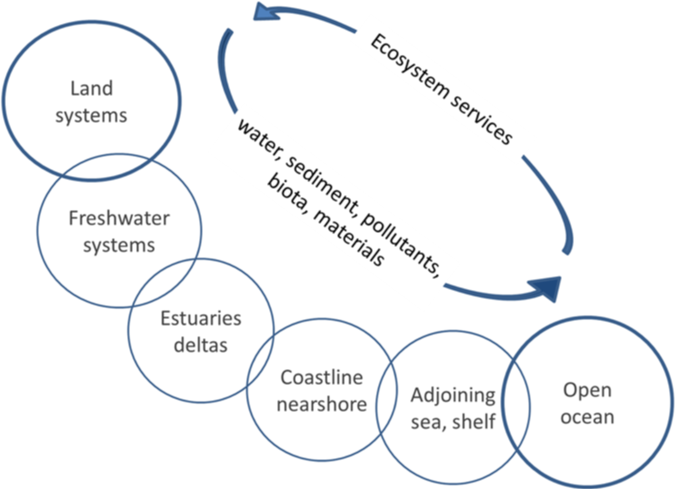Marine scientist Sulev Nõmmann from SEI Tallinn was part of the international research team behind the Source-to-Sea project developed for the Global Environment Facility (GEF). The project aimed to find new ways to govern and manage resource flows in a continuum from source to sea.

Here he discusses a recently published article on the Source-to-Sea concept concentrating on the new paradigm for conceptualizing and governing the different flows in the source-to-sea continuum. Dr Nõmmann’s role was including material flows and flows of marine litter into this theoretical concept, and he was responsible for a case study on the Baltic Sea.
Q. What is the Source-to-Sea approach and what is new about it?
SN. The Source-to-Sea approach is all about global water governance and addressing the gaps that are present in current systems. At the core is the idea that to manage development, understand impacts and protect ecosystems in a river system, it is not sufficient only to look at separate parts of the system – say, the coastal zone or upstream lakes. You need to look at the whole system from the source out into the sea that it affects. A Source-to-Sea system includes many flows – of water, flora and fauna, sediment, pollution etc. – that can carry impacts of activities far downstream. By the same token, management must be able to cross jurisdictions, even national borders.
For instance, if most water is used upstream for agricultural irrigation or polluted by an industry, the effects and problems can accumulate downstream and ultimately in the marine ecosystems. These impacts may seem very distant to upstream actors, but it is their activities that are responsible. We are not yet used to thinking about this problem on a broader scale and globally. We are not used to seeing water systems as a “continuum”. As with climate change, we need concepts and practical governance that links the causes and effects.

Key flows connecting geographies from source to sea: water, sediment, pollutants, biota, materials and ecosystem services flows. Image: International Water Association
I would emphasize that this is not just about formal governance but also very much related to education and behaviour change.
Q. Your paper says that Source-to-Sea impacts don’t always flow in one direction but that downstream developments might impact ecosystems upstream – can you give an example?
SN. An example would be fish migration. When you build dams in a river, it affects some fish species’ ability to move upstream to spawn.
Q. How does the Source-to-Sea concept link with Integrated Water Resource Management (IWRM)?
SN. IWRM is a good and very commonly used concept. What IWRM does is to bring together different interest groups wanting to use water resources for various reasons such as energy production, agriculture, different industries and drinking water. Together, they can find a strategy that best meets the interest of all, while protecting the river ecosystems.
The problem is that the IWRM focuses on rivers, and typically, coastal areas and deep oceans are not included. The Source-to-Sea approach, on the other hand, takes into account both the freshwater and salt water systems.
Q. The paper paints quite a bleak picture of the current state of water systems globally, due to human pressures, pollution, marine litter, climate change etc. How can the Source-to-Sea approach help with this? What are its implications for policy-making?
SN: The first thing would be to bring about changes in thinking and behaviour that are very much needed. This includes also a change in the education system. Currently university programmes typically deal with freshwater and salt water separately; marine sciences are taught in one department and terrestrial ecosystems in another. The situation is similar in the governance structure, where ministries and local authorities have different departments for marine and freshwater issues. Therefore, understanding that flows from land to sea are linked into one major system will certainly help to create better governance. This includes the waste management system, industrial pollution, fishing, forestry, agriculture etc.
Q. Can the recommendations made in this paper be adapted everywhere?
SN. Yes, absolutely. The Source-to-Sea approach has a very global span. It’s a change of paradigm, I would say, that could have a major impact on how water issues are seen.
Design and development by Soapbox.